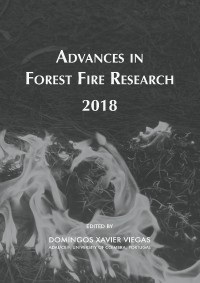Please use this identifier to cite or link to this item:
https://hdl.handle.net/10316.2/44537| Title: | Wildfire susceptibility mapping in Liguria (Italy): comparison of statistical driven partitioning and machine learning approach | Authors: | Biondi, Guido Campos, Lorenzo D’Andrea, Mirko Esposti, Silvia Degli Fiorucci, Paolo Tonini, Marj |
Keywords: | Wildfire susceptibility mapping;Machine learning;Random Forest;Statistical partitioning;forest management plan | Issue Date: | 2018 | Publisher: | Imprensa da Universidade de Coimbra | Journal: | http://hdl.handle.net/10316.2/44517 | Abstract: | The identification of areas most vulnerable to fire risk is a key tool in wildfire management, particularly in view of the limited availability of fire risk management resources, most of which are used for national and regional air services. The few resources available can thus be used on a yearly basis to mitigate problems in the areas at highest risk by defining a program of interventions. In this contest, the main objective of the present study is to elaborate wildfire susceptibility mapping for Liguria region (Italy), and to compare results obtained by a statistical driven partitioning models with the ones obtaining by appling a machine learnig approach, based on Random Forest (RF) algorithm. The availability of a mapping of fire perimeters spans almost 20 years (1996-2016), and this, combined with a detailed knowledge of topography, climate and land cover, allowed to understand the main features involved in wildfire occurrences and their behavior. The seasonality of the fire regime was also considered, partitioning the analysis in two macro season (November-April and May- October). The analysis was based on a recursive-quantiles subdivision of the territory in classes based on the different available information layers: elevation, slope, aspect, rainfall height, temperature (the latter subdivided in winter and summer periods). The algorithm was designed in order to assure the equal representation of each class, in which the number of fires occurred in the period of analysis is considered, in order to have an estimation of the fire hazard with a constant statistical confidence. The resulting wildfire susceptibility map was then compared with the map obtained applying a machine learning (ML) approach. ML explores the conception of algorithms capable of learning from and make predictions on data, through the modeling of the hidden relationships between a set of input and output variables (i.e. the predisposing factors and the occurrence of the phenomenon). The main benefit is that these approaches are data driven, meaning that they do not need a priori knowledge of the process. Moreover, RF directly provides the measurement of the importance of each variable. The results show that both the approaches identify shrubs as the vegetation most affected by wildfire both in summer and winter season. RF algorithm seems to perform better, detecting 90% of the of the BA within 10% of the entire territory instead of 60% of burned area within the 20% of the territory for the statistical driven partitioning. These results are preliminary and need to be further evaluated in detail by establishing a working plan accounting for a common validation dataset for the two approaches. | URI: | https://hdl.handle.net/10316.2/44537 | ISBN: | 978-989-26-16-506 (PDF) | DOI: | 10.14195/978-989-26-16-506_20 | Rights: | open access |
| Appears in Collections: | Advances in forest fire research 2018 |
Files in This Item:
| File | Description | Size | Format | |
|---|---|---|---|---|
| wildfire_susceptibility_mapping_in_liguria.pdf | 1.04 MB | Adobe PDF |  |
Items in DSpace are protected by copyright, with all rights reserved, unless otherwise indicated.
